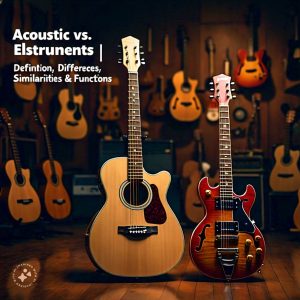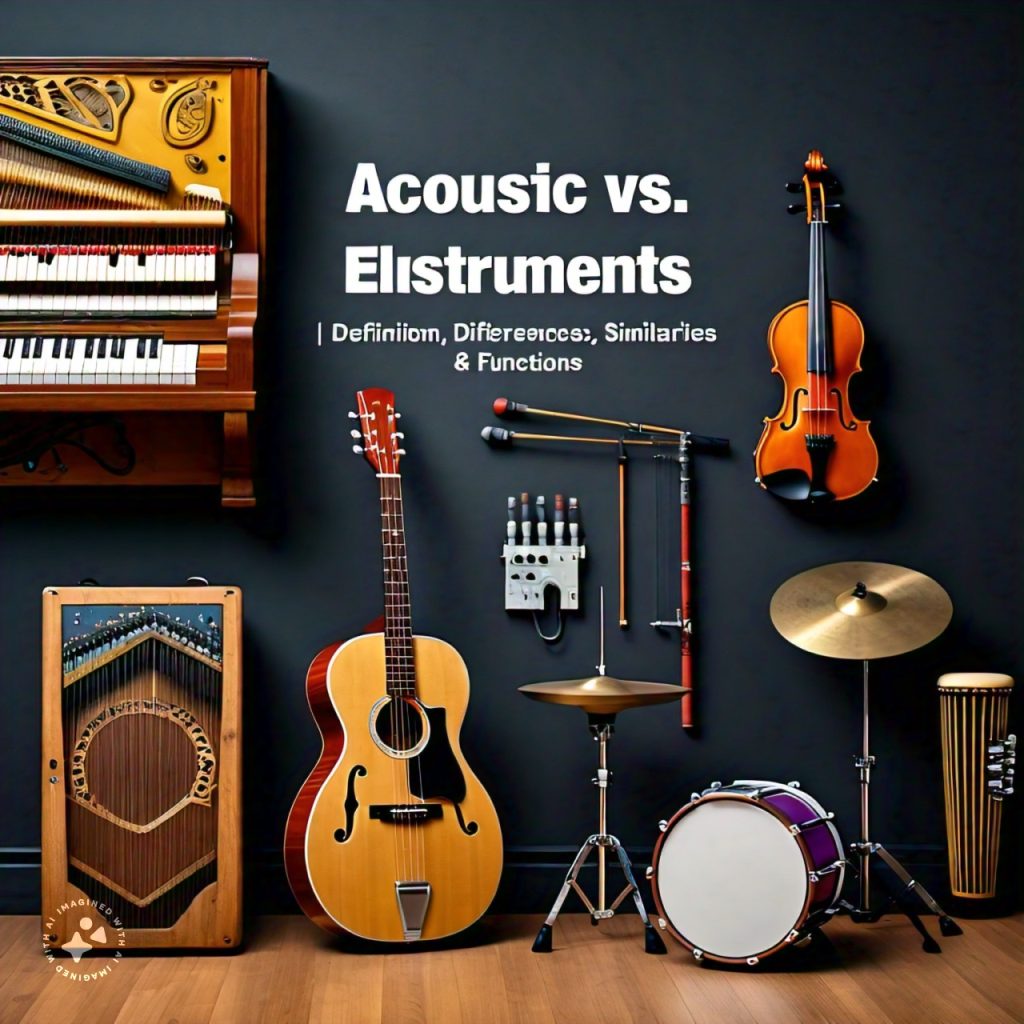Hello, Here in this post we are going to tell you everything you may need to know about Acoustic and Electric Instuments, so if you are a songwriter and you don’t know anything about Acoustic and Electric Instuments, just stick around because here in this article we are going compare “Acoustic vs. Electric Instruments | Definition, Differences, Similarities & Functions”.
As a singer-songwriter for many years, I’ve spent countless hours exploring the magic of music through a multitude of instruments. From the rich resonance of an acoustic guitar to the electrifying twang of an electric one, each instrument offers a unique voice that shapes a song’s character. But for aspiring musicians, navigating the world of acoustic and electric instruments can be daunting.
This comprehensive guide will be your personal sound map, unveiling the definitions, differences, similarities, and functions of these two instrument categories. Packed with clear explanations, engaging anecdotes, and valuable insights, this post will equip you to not only understand these instruments but also choose the one that perfectly complements your musical journey.
What Makes an Instrument Acoustic or Electric?
The fundamental difference between acoustic and electric instruments lies in how they generate sound. Buckle up for a quick dive into the science behind the sound!
What are Acoustic Instruments?
Imagine plucking a guitar string. The vibration travels through the string, causing the top (soundboard) of the guitar to vibrate as well. This vibration pushes and pulls on the surrounding air molecules, creating sound waves that reach your ears. The size, shape, and materials of the instrument all play a crucial role in shaping the final tone.
Some popular examples of acoustic instruments include:
- Guitars (acoustic, classical)
- Pianos (grand, upright)
- Violins, cellos, double basses
- Flutes, clarinets, saxophones
- Drums (acoustic drum kits)
What are Electric Instruments?
Electric instruments were first introduced in the early 20th century and have since become a staple of popular music, particularly in genres like rock, pop, and electronic music. They offer a bright, loud, and versatile sound that can be shaped and manipulated through effects pedals and other electronic equipment.
Here’s a breakdown of how electric instruments work:
- Pickups: These are magnets positioned near the strings or within the body of the instrument. String vibrations disrupt the magnetic field of the pickups, generating an electrical current.
- Amplifiers: These electronic devices take the weak electrical signal from the pickups and make it much stronger, allowing the sound to be heard clearly.
- Effects Pedals are optional devices that can manipulate the sound of the electric instrument in various ways (distortion, reverb, etc.).
Some popular examples of electric instruments include:
- Electric guitars (solid-body, hollow-body)
- Electric basses
- Electric keyboards (synthesizers, digital pianos)
- Electric violins, cellos
- Electronic drums (drum machines, electronic drum sets)
Differences Between Acoustic and Electric Instruments
-
Sound Production: Acoustic instruments produce sound through vibration and resonance, while electric instruments produce sound through electronic pickups and amplifiers.
-
Sound Quality: Acoustic instruments tend to have a warmer, more natural sound, while electric instruments have a brighter, more aggressive sound.
-
Playability: Acoustic instruments often require more physical effort to play, particularly in terms of finger strength and dexterity. In contrast, electric instruments are generally easier to play due to their lower action and lighter strings.
-
Maintenance: Acoustic instruments require more maintenance than electric instruments, as they are more prone to damage and need regular tuning and adjustment.
Similarities Between Acoustic and Electric Instruments
-
Musical Purpose: Both types of instruments are used to create music and express oneself creatively.
-
Construction: Both acoustic and electric instruments are made from a variety of materials, including wood, metal, and plastic.
-
Genre: Both types of instruments can be used in a wide range of musical genres, from classical to rock to jazz.
Functions and Uses of Acoustic and Electric Instruments

-
Recording: Acoustic instruments are often preferred for recording due to their warm, natural sound, while electric instruments are often used for live performances due to their loud, energetic sound.
-
Live Performances: Electric instruments are ideal for live performances due to their ability to project sound to a large audience, while acoustic instruments are better suited for intimate, smaller venues.
-
Practice: Acoustic instruments are great for practice due to their softer sound, while electric instruments are better suited for full-band rehearsals and performances.
FAQs
Can I use an electric instrument for classical music?
Do I need an amplifier for an acoustic instrument?
Can I use an acoustic instrument for rock music?
Conclusion
Related Posts:


